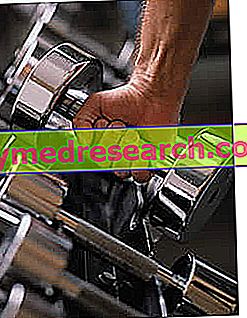Proctoscopy is a diagnostic method aimed at the endoscopic observation of the anal canal (anoscopy) and the rectal canal (rectoscopy). For this purpose, a special instrument is used, known as a rectoscope or proctoscope, introduced after lubrication through the anal opening; it is basically a metal tube with a support at the apex and a possible magnifying glass to better observe the examined region. A similar instrument, but of shorter length, is used for the study of the anal canal only (anoscopy).
To allow an adequate visualization of the rectal walls during proctoscopy, it is good that these are properly cleaned. In this regard, the patient is given precise instructions from the same center of digestive endoscopy; generally, the day before the exam is asked to perform an enema with a liter of warm water or with a special preparation available at the pharmacy; the same operation will have to be performed a few hours before the appointment. No special dietary requirements are required, nor the use of laxatives (not recommended).
To facilitate the examination of the walls of the rectum, the patient is asked to undress from the waist down and kneel on the couch, tilting the trunk forward and curving the back in order to facilitate rectal exploration (genu-pectoral position shown in the center of the figure); alternatively it may be asked to adopt the left lateral position (known as Sims position). Although it is an embarrassing position it is important that it is maintained by trying to remain still. The insertion of the proctoscope is preceded by a visual examination of the anal opening and a manual exploration of the anus and rectum (the doctor inserts the tip of the rightly lubricated right index finger in the anal canal). After this examination, the rectoscope is then gently inserted after careful lubrication. After reaching the desired depth and having removed the shutter, the instrument is made to escape slowly and gently, making circular movements, to have a direct view of the rectal and anal walls. In the eventuality, other instruments can be inserted inside the central channel, in order to take a small tissue sample (biopsy) to be examined later in the laboratory. Often air is also blown in to stretch the walls of the rectum and make them easier to explore.

The operation is not normally painful, at the most annoying; however under certain conditions the examination is performed under local anesthesia.
There are numerous pathivable pathologies through proctoscopy, which finds diagnostic indication in the presence of rectal bleeding, hemorrhoids, anal or rectal polyps, carcinoma of the anal canal or rectum, anal fistula, wounds and traumas of this region. Rectoscopy also has potential therapeutic applications, aimed above all at resection of polyps or tumors and the treatment of hemorrhoids (for example, to perform injections of sclerosing substances or for selective cryotherapy operations).
The results of proctoscopy are available instantly, but in case of biopsies the report is delivered after a few days.
Today, the traditional procedure illustrated in the article is slowly retiring in favor of the so-called digital videoproctoscopy, in which the aid of a microtelecamera allows to visualize enlarged images on the appropriate screen and record them on magnetic support, with the possibility of viewing them at different speed and compare them with the results of future or previous rectoscopic examinations.



